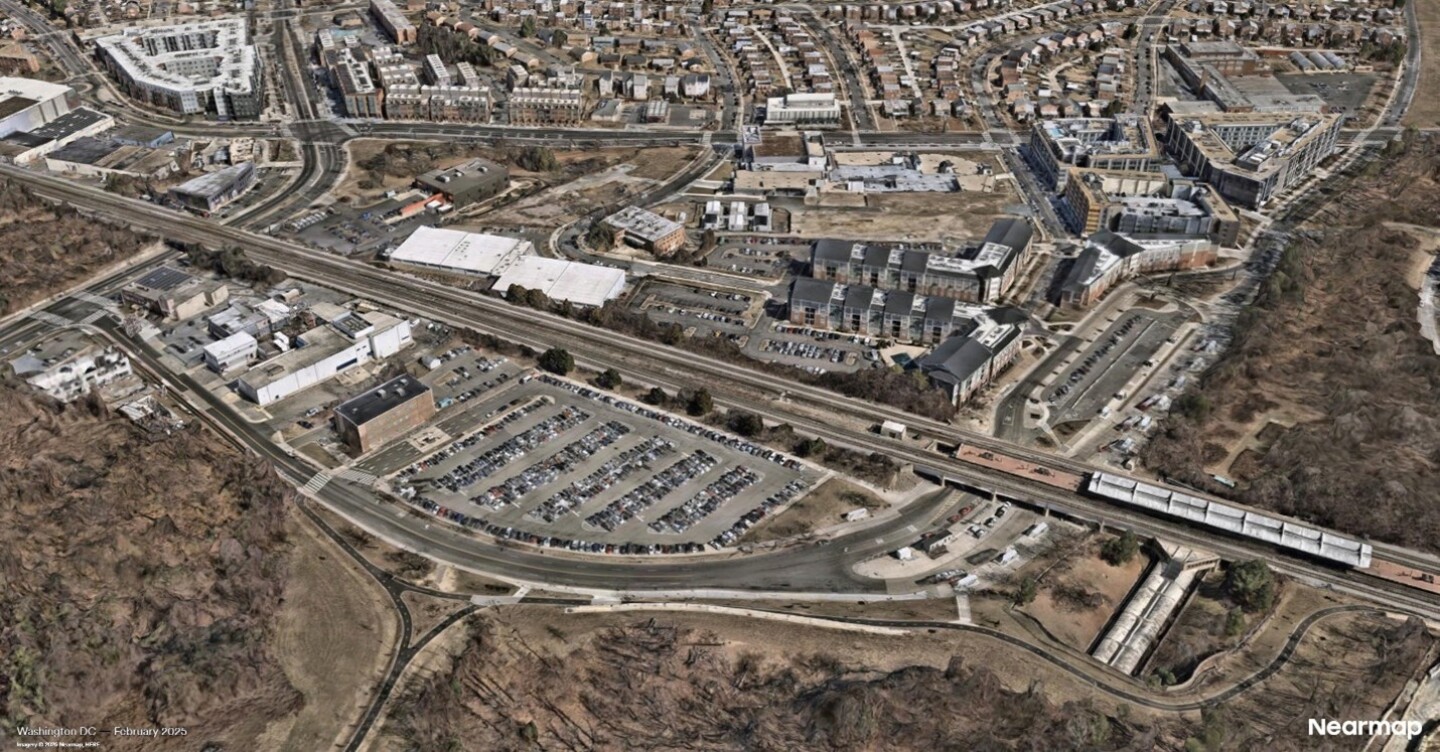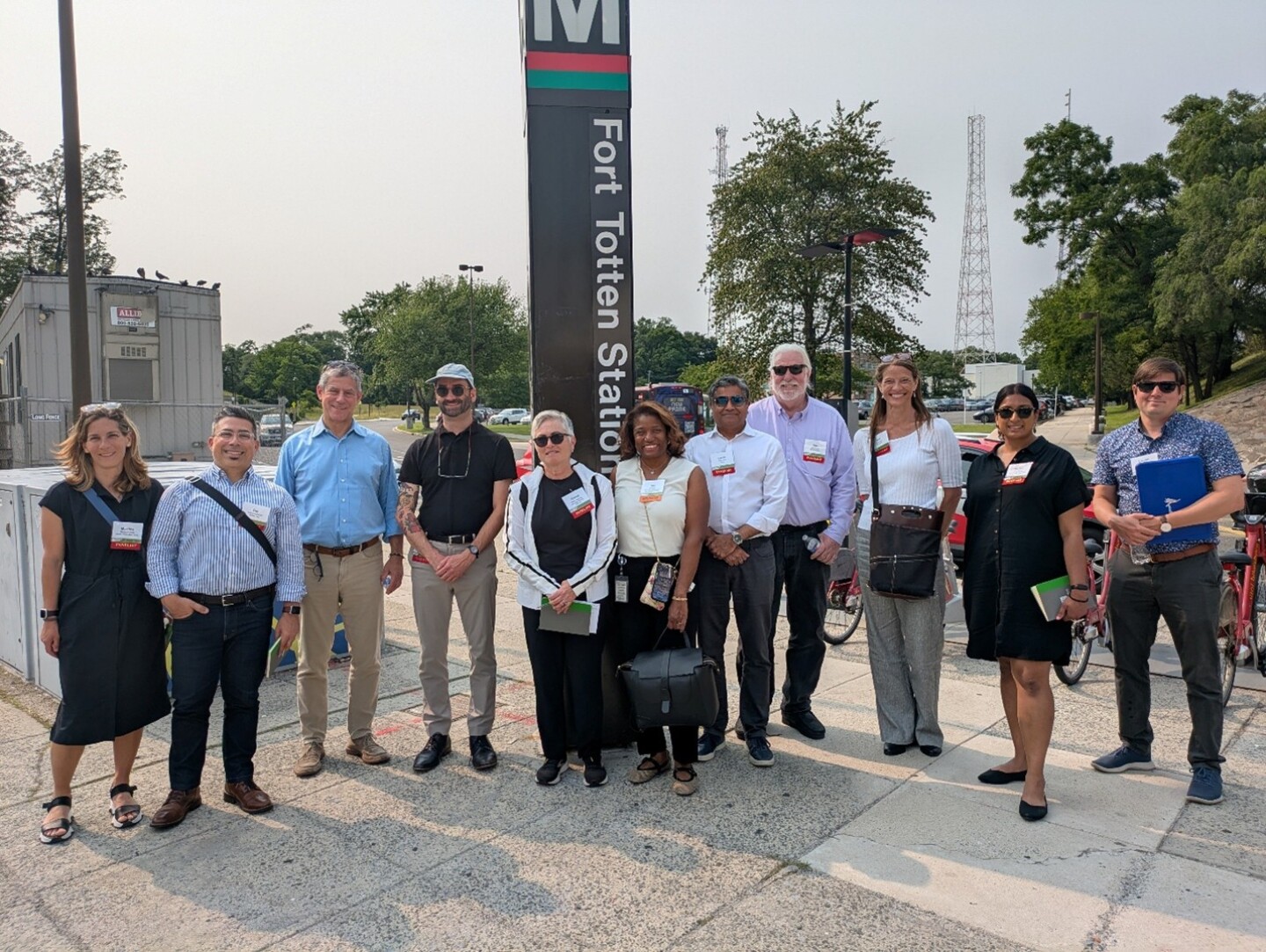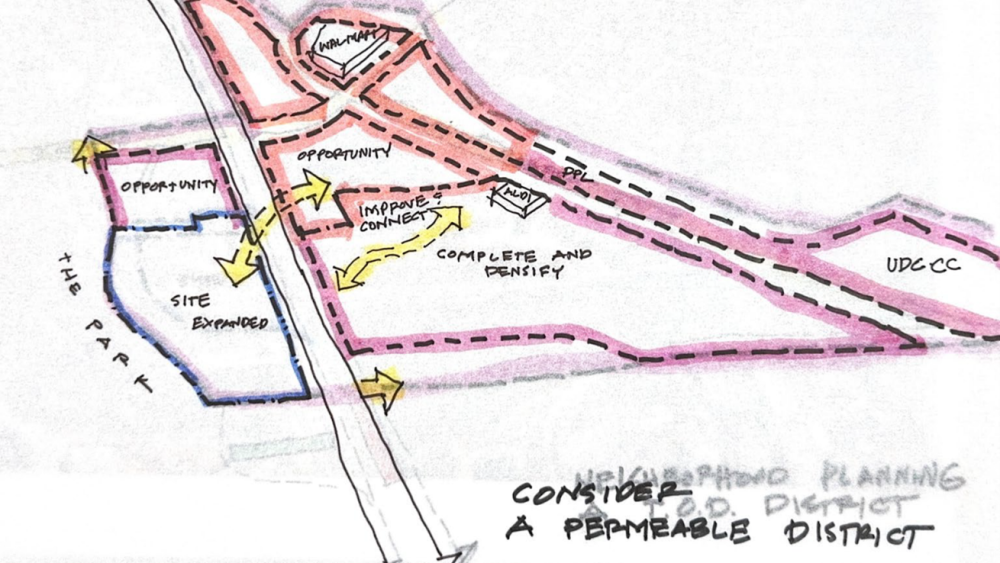“NZI on TAP” is a new series that explores the energy and vigor participants experience on-site during Net Zero Imperative (NZI) Technical Assistance Panels (TAPs). Through this series we aim to unearth and highlight the thoughtful conversations, recommendations, and outcomes of ongoing TAPs.
ULI Washington, in partnership with the Washington Metropolitan Area Transit Authority (WMATA or Metro) and in coordination with ULI’s Net Zero Imperative (NZI), convened the Fort Totten Net Zero TOD Technical Assistance Panel June 3–5, 2025.
WMATA’s overarching goals were to:
- Establish a roadmap to a financially viable development opportunity at Fort Totten
- Identify partnership models for success
- Create a scalable, repeatable, best-practices model for development in the District of Columbia (and the region)
The panelists came from across the region. They were asked to provide recommendations to support joint development at the Fort Totten Metro station in accordance with the District’s upcoming net zero buildings requirements (“Clean Energy DC Building Code Amendment Act of 2022”), which require both new construction and substantial building improvements to meet a defined net zero energy standard.
WMATA sought advice on how to accommodate and leverage these net zero requirements for a 4.6 acre (1.9 ha) parcel (depicted below) envisioned to be a transit-oriented development that includes a mix of retail, residential, and commercial uses. The site is on the west side of the Fort Totten Metro station and Red Line tracks, and it accommodates two existing uses, a 408-space Park & Ride lot for Metro commuters and a Metro office building (excluded from the study). Previous studies and test fits showed that reconfiguration of the existing surface parking facility could result in the development potential of as much as 476,000 square feet (44,222 sq m) of residential across eight parcels.
The ULI Net Zero Imperative (NZI) is ULI’s multiyear initiative to accelerate decarbonization in the built environment and advance the organization’s net zero mission priority. Implemented by the ULI Lewis Center for Sustainability in Real Estate in collaboration with ULI District and National Councils and local partners, the initiative includes key activities such as Technical Assistance Panels (TAPs), which are intense, three-day engagements during which ULI member experts and partners help clients or sponsors—often local governments—think through strategies for advancing their net zero goals and priorities.
NZI provides grant funding and forms a cohort of cities each year to tackle net zero and building decarbonization challenges in their communities through technical assistance and implementation efforts (e.g., workshops, convenings, case studies, graphic diagrams). This global cohort holds virtual meetings every month and convenes in person at ULI Spring and Fall Meetings to learn best practices and avoid potential pitfalls. Insights across the cohorts are distilled and shared via articles, reports, and videos. |
Expert panelists
The following experts in architecture, civil engineering, urban planning, and development considered WMATA’s goals, elicited stakeholder feedback, and provided thoughtful recommendations to answer WMATA’s scope questions:
- Brad Dockser, CEO, Green Generation (TAP chair)
- Guilherme Almeida, associate principal and design director, Hickok Cole
- Swathi Bonda, development adviser
- Martine Combal, senior vice president of public institutions, JLL
- Otto Condon, principal, ZGF Architects
- Varun Kohli, principal and director of sustainability, Corgan
- Carson Lucarelli, transportation planner III, City of Alexandria
- Kim Pexton, senior vice president of sustainability, JBG Smith
- Harriet Tregoning, director, New Urban Mobility Alliance; senior advisor on land use in the Office of the Secretary, United States Department of Transportation
Another tremendous experience through ULI and its Net Zero Imperative program! Thank you to the TAP sponsor, Washington Metropolitan Area Transit Authority, and the other D.C. partners who contributed. This was a great discussion and opportunity to share thoughts on how to improve TOD opportunities and spark net zero development at Fort Totten. It was incredible to be surrounded by such amazing talent.
WMATA asked the panelists to consider the following questions:
- How feasible is the proposed development program at Fort Totten, given current market conditions?
- What are the incremental additional costs required to comply with the new standard detailed in the Clean Energy DC Building Code Amendment Act of 2022, and do they impact project feasibility?
- What is the “roadmap” to viable development at Fort Totten that complies with new energy standards as detailed in the DC Building Code Amendment Act of 2022?
- Are there partnership and collaboration opportunities locally to advance development at Fort Totten?
- What are the funding tools specific to the District of Columbia that can be used in addition to federal and private funding to support net zero developments?
- How can Fort Totten serve as a model for financially viable joint development after the standard detailed in the DC Building Code Amendment Act of 2022 goes into effect?
What are some other considerations to achieve a successful joint development at this location?
A net zero roadmap
A tour of the site with WMATA offered opportunities to better understand past joint development work on other parcels, occupancy rates, and placemaking for the community. It was clear to panelists that the site offered a large opportunity for dense, transit-oriented development but would need to address some deficiencies in pedestrian access and comfort to attract people to the site.
On the second day, panelists were joined by more than 20 local stakeholders and community leaders, who shared insights into current barriers and successes for net zero transit–oriented development in the WMATA service area. Stakeholders included local government agencies, federal agencies, consultants, and local developers.
Stakeholders and panelists discussed the net zero building code for the District and surrounding community sustainability requirements. Some of the stakeholders said that the sustainability requirements could be a challenge to the site’s development, but panelists also noted that the difference between the existing building code and the future net zero code has already been shrinking over time (including perceived costs).
Many stakeholders commented on the potential sale of renewable energy certificates (RECs), which were performing strongly in the District market at the time of the TAP. Panelists then spent two days deliberating and forming actionable recommendations for WMATA.
Preliminary recommendations
The final day culminated in a presentation to WMATA with the panel’s initial set of recommendations for the Fort Totten site.
A key takeaway from the panel was a recommendation for WMATA to shift its mindset on net zero requirements from one that sees these requirements as leading to incremental cost increases to one that focuses on how the requirements create value and co-benefits (such as improved air quality and decreased energy costs).
The panel also perceived an important opportunity for WMATA to holistically assess its entire real estate portfolio as opposed to studying individual sites in isolation from one another to maximize impact and leverage combined assets.
Other high-level recommendations from the panelists, informed by the rich stakeholder interviews, focused on the site’s development potential:
1. Reduce the required parking
2. Create a sense of place
3. Collaborate with local utility PEPCO to ensure a smooth development process
4. Integrate the new development into the existing neighborhood fabric
Panelists also mentioned a few considerations to mitigate potential cost increases, such as specific funding sources for net zero investments (e.g., District of Columbia Sustainable Energy Utility or the DC Green Bank), integrated design processes that incorporate net zero requirements up front, and new technologies that will continue to make it easier for buildings to increase their energy efficiency and achieve net zero in the future (e.g., heat pumps, energy storage, high efficiency appliances, and solar panels).
Additional short-term recommendations from the panel included deepened partnerships with local community groups to begin activating the Fort Totten space and investing in placemaking around the station. Panelists also recommended identifying “quick wins” to accelerate development opportunities, such as lighting improvements, pop-up retail, and artist activations.
Long-term recommendations included making both the site and station-adjacent areas more pedestrian friendly by prioritizing the pedestrian experience, as well as by formalizing a collaboration network with the city and the utility to ensure a development-friendly experience. Panelists also emphasized the need to consider framing the joint development in terms of housing, transportation, and climate change to maximize potential funding sources (e.g., REC monetization, DC Green Bank financing, TIFIA/WIFIA infrastructure loans) and to address the most pressing needs in the region.
Continuing the momentum
ULI Washington will publish its TAP report in the coming months, diving deeper into the opportunities and challenges of this site’s transit-oriented development and pragmatic net zero strategies, and will provide a playbook for joint development across the WMATA real estate footprint. This TAP report will be published on ULI’s Knowledge Finder database and shared on the NZI website.
As the report is received by the community, one or two recommendations may be prioritized for immediate action. NZI can also support implementation activities, such as workshops, convenings, graphic deliverables, or videos to further local impacts.
Interested in getting involved? Applications for Cohort 5 of NZI are open through July 31, 2025. Learn more at ULI.org/NZI. Members and partners can express their interest to serve as panelists by submitting information through the Net Zero Imperative Technical Advisory Panelist ULI Navigator form. Reach out to [email protected] for more information.
Related Resources
· Building Decarbonization: Top 10 Insights from the ULI Net Zero Imperative
· ULI Net Zero Imperative Webpage & Program Overview Video
· ULI Net Zero Imperative: Three Years of Accelerating Building Decarbonization













